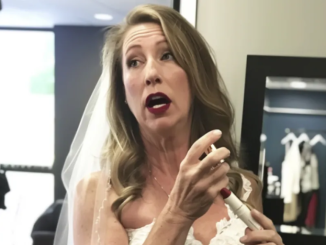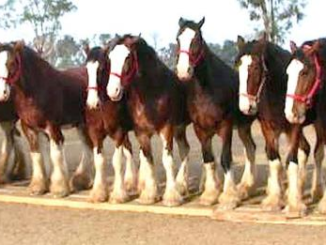Cooking for the first time can be intimidating. There are so many rules, tips, and techniques that experienced cooks take for granted. One common mistake that beginners make is washing vegetables with soap, believing that it will make the food cleaner. However, this is not only unnecessary but can also be harmful.
Why Would Someone Wash Vegetables with Soap?

If you’ve never cooked before, you might assume that soap is the best way to remove dirt and bacteria from vegetables. After all, soap is used to clean dishes, hands, and surfaces—so why not food? While this logic seems reasonable, it’s actually a big misconception.
Many beginners want to ensure that their produce is as clean as possible, especially with concerns about pesticides, bacteria, and dirt. However, using soap is an unnecessary step that can do more harm than good.
The Hidden Dangers of Washing Vegetables with Soap
Washing vegetables with soap might sound harmless, but it can lead to several problems:
1. Soap is Not Meant for Consumption
Household dish soap and hand soap contain chemicals and detergents that are not meant to be ingested. Even if you rinse thoroughly, soap residues can remain on the vegetables, leading to stomach discomfort or digestive issues when consumed.
2. It Can Alter the Taste of Your Food
Have you ever accidentally gotten soap in your mouth? That bitter, unpleasant taste can transfer to your food if you wash your vegetables with soap. This can completely ruin the flavor of your dishes.
3. Soap Can Strip Away Natural Protective Layers
Many vegetables and fruits have a natural protective coating that helps keep moisture in and bacteria out. Washing them with soap can strip away these natural defenses, causing them to spoil faster.
4. Risk of Chemical Ingestion
Some soaps contain harmful chemicals that can be dangerous if ingested, even in small amounts. This is why food-grade cleaning solutions exist for commercial use, but for home cooking, they are unnecessary.
What is the Proper Way to Wash Vegetables?
Now that we know why using soap is a bad idea, let’s talk about the correct way to clean your vegetables:
1. Rinse with Cold Water
The best and easiest way to clean produce is by rinsing it under running cold water. This helps remove dirt, bacteria, and pesticide residues without the need for soap or chemicals.
2. Use a Vegetable Brush for Tough Skins

For produce with thicker skins like potatoes, carrots, and cucumbers, using a vegetable brush can help scrub away dirt more effectively.
3. Soak in Vinegar or Baking Soda Water (Optional)
If you’re extra cautious, soaking vegetables in a solution of vinegar and water (1 part vinegar to 3 parts water) for a few minutes can help remove more bacteria and pesticide residue. Baking soda water is another great alternative.
4. Peel When Necessary
If you’re concerned about contaminants, peeling vegetables like carrots, cucumbers, or apples can help remove pesticide residues and dirt.
5. Dry Properly
After washing, pat your vegetables dry with a clean towel or let them air dry. This helps prevent bacterial growth and keeps them fresh longer.
Common Misconceptions About Cleaning Vegetables

There are plenty of myths about washing vegetables, and it’s important to separate fact from fiction:
- “Hot water kills bacteria faster.” – While hot water can kill bacteria, it can also cause vegetables to wilt or lose nutrients. Stick with cold water.
- “Soap removes pesticides better than water.” – Water alone does a great job of removing most pesticide residues, especially if you scrub or soak the produce.
- “You need special fruit and vegetable washes.” – While commercial produce washes exist, studies show they’re not significantly more effective than plain water.
Final Thoughts
Washing vegetables is an essential step in cooking, but using soap is a rookie mistake that should be avoided. Soap isn’t designed for consumption, and it can leave harmful residues on your food. Instead, stick to cold water, gentle scrubbing, and natural cleaning solutions like vinegar or baking soda.
Cooking is a learning process, and mistakes happen. But now that you know why soap and veggies don’t mix, you’re one step closer to becoming a kitchen pro. Happy cooking!
Four boys singing in church is the funniest thing I’ve seen. Keep your eyes on the boy in the vest

I must say that this was one of the funniest funny videos I’ve ever seen. and trust me—I’ve been here! Bravo to the gifted boys that assembled this.

I must say that this was one of the funniest funny videos I’ve ever seen. and trust me—I’ve been here! Bravo to the gifted boys that assembled this.

The Christmas scene is set against the perfect backdrop of a nicely adorned stage. Every audience was anticipating what they thought would be a fun, but conventional, holiday church service.
The four lads show up on stage dressed to impress in white shirts, black slacks, and ties. Then it takes place! Comedy follows! It’s not like you could miss the guy wearing the vest and his entertaining actions, so keep an eye on him!
Every minute that goes by, this traditional gospel song gets hilarious. It’s clear the boys are having a blast. The crowd is giggling uncontrollably. These four lads brought the church to tears of laughter with their exuberant entertainment and worship!
A lot of people think that funny clean comedy is extinct these days. These children, however, are not. They’re fantastic. My day was truly made by them. To join in on the fun, watch this funny Christmas performance. utterly wonderful! It was hard for me to stop giggling!
YouTube:
To be quite honest, my friend, there’s just nothing quite like good, clean humor. the kind that captures the pure joy and spontaneity of life instead of depending on cheap tricks or nasty jokes. Watching these boys perform is like traveling back in time to happier, carefree days when fun was unrestricted and laughing was abundant. These boys truly nailed it.
Now, I really do mean it when I say that the performance was hilarious. The boy wearing the vest is the main attraction; he appears to have no boundaries between his physical appearance and his sense of humor. He is nothing short of brilliant in the way he combines earnest worship with lighthearted pranks.
Imagine a stage with the calm background of a Christmas scene, and then all of a sudden… A hilarious turn of events that leaves everyone clenching their sides. The collective gasp that occurs when the guys’ performance takes an unexpected turn is nearly audible.
Not only are the kids’ antics funny, but the audience’s and the choir’s response makes this a very memorable moment. The room exudes an authentic warmth and happiness that connects with visitors on a personal level. Isn’t it wonderful when comedy can unite people in such a way?
Let’s also discuss the video itself: amazing! This type of material is the kind that gains popularity for all the right reasons. It’s cheerful, invigorating, and ideal for the holidays. Watching these boys bring joy and happiness into a traditional atmosphere makes you grin.
There’s no disputing that these days, it’s uncommon to find this kind of amusement. It serves as a lovely reminder that the most profound happiness can occasionally come from the simplest things. So, believe me when I say that this video is just what you need if you’re having a bad day or just need a good laugh.
These four lads are a brightness in a world when pessimism and doom frequently triumph over comedy. They serve as a reminder of the healing, uniting, and uplifted effects of laughter. See how much fun life can be when we don’t take ourselves too seriously? Just keep an eye on that boy wearing the vest.



Leave a Reply